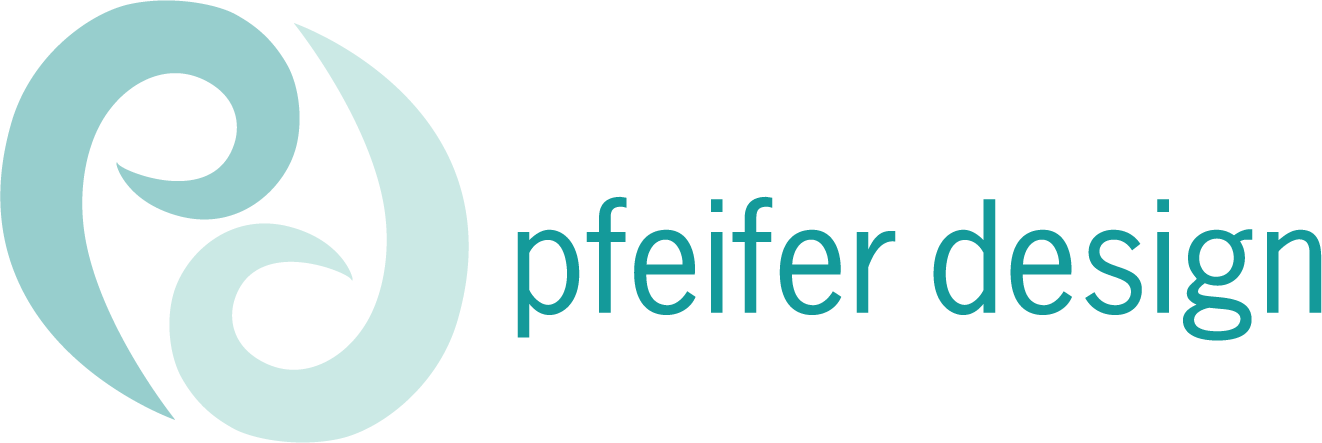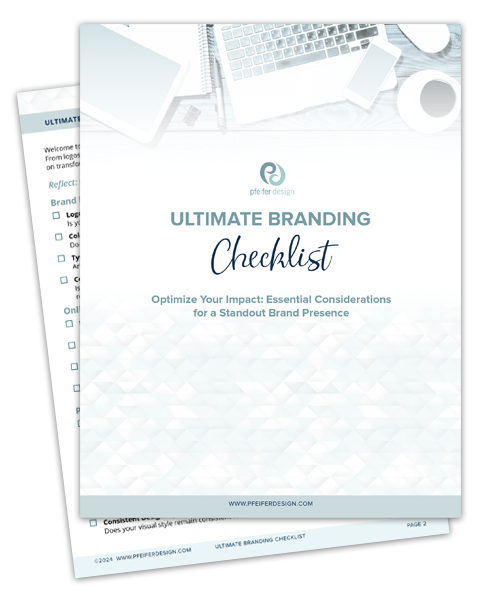Finding your brand voice
Hi! I hope you enjoy reading this blog post. If you’d like to just have Pfeifer Design do the work for you, please click here.
One of the first steps in brand development is determining your brand voice and attributes. This is the style in which you communicate to your audience that embodies the way you want your brand to be perceived. An auto repair shop may have a different brand voice than a natural beauty products shop. They may share some audience overlap, but deciding how you want to communicate to that audience, through a variety of means such as advertising campaigns, or social media post, helps to create an impression and make a connection with that audience. Your brand strategy consultant or designer walks you through the steps of determining your brand voice, and then carrying it through to your brand elements in a consistent, appealing way.
The steps I take in helping a business find their brand voice are:
Research - When starting a branding project, I first do extensive research on the client and/or business. If they have completed any market research or surveys, this is a great thing to peruse to better understand how your business is perceived by others, especially by those who are aware of your presence and are in your sphere of influence. A restaurant might do a comments box, or review their Yelp reviews, to see what others are saying about them- how they are perceived, and what their strengths and weaknesses are. A women’s club service organization that I worked with was getting ready to rebrand, after having their logo for many years - one that was especially embraced by some of their older members who had sentimental ties to the logo, and were reluctant to change it. We polled the members about what the organization means to them, what they like about the existing logo, the ways they hoped their organization would expand and change in the future, and what they wanted to stay constant. Through better understanding the wants, needs, and concerns of the membership, we were able to understand their brand.
Messaging Development - Once I have a solid understanding of the client's business and its perception in the market, the next step is to develop clear and consistent messaging. This involves crafting key messages and value propositions–a clear and concise statement that outlines the unique benefits and value that a product, service, or brand offers to its customers or target audience–that align with the brand's identity and resonate with the target audience. For instance, a tech startup might focus on messages that highlight innovation, efficiency, and cutting-edge solutions, while a local bakery might emphasize handmade, fresh, and community-oriented aspects.
Tone and Language - The choice of tone and language is crucial in defining the brand's voice. Are you aiming for a formal and professional tone, a casual and friendly one, or something in between? This decision should align with the brand's values and the preferences of the target audience. The words you choose, the sentence structure you use, and the vocabulary you employ all contribute to the overall voice of the brand.
Visual Language - A brand's voice is not just about words; it extends to the visual elements as well. Visual language includes aspects like color palette, typography, imagery, and design style. These visual elements should consistently reflect the brand's personality and values. For instance, a high-end luxury brand might use elegant and sophisticated visuals, while a brand targeting a younger audience might opt for vibrant and dynamic imagery.
Consistency Across Channels - In a world where brands interact with their audience through various platforms, maintaining consistency is key. Your brand voice and attributes should be seamlessly integrated across all touchpoints, whether it's your website, social media profiles, advertising campaigns, or physical spaces. This consistency helps in building a strong and recognizable brand identity.
Storytelling - Who are you? What do you do? How, Why, do you do it…? Storytelling is a powerful tool for conveying your brand's values and connecting with your audience on a deeper level. Developing a brand narrative that highlights the brand's journey, mission, and the value it brings to customers can create an emotional connection and make your brand more relatable. And being good brand ambassadors every step of the way–learn the “what and why” behind your brand so you can accurately and authentically convey it to others, when crafting messaging to reach your audience through all of your touchpoints.
Incorporating Feedback - Brand development is an ongoing process. As your business evolves and grows, your brand voice may need to adapt as well. Regularly gathering feedback from customers, monitoring market trends, and staying attuned to changes in your industry can help you make informed adjustments to your brand voice and attributes.
Remember, the goal of determining your brand voice and attributes is to create a lasting and meaningful impression on your audience. This impression should align with your business's core values and resonate with the people you want to reach, fostering loyalty and trust over time.
Drop me a message if you're interested in developing your brand- I'd be happy to chat! And please take a look at some of my branding case studies at www.pfeiferdesign.com
Revitalize Your Brand! 🌐✨
Unlock the secrets to a powerful brand with our Ultimate Branding Checklist.
This value-packed freebie is a curated list of essential elements to elevate your brand. From logos to online presence, this checklist is your guide to ensuring a standout brand. Let’s get started on transforming your business for success! You can print the pages, or use them as an interactive pdf.
🚀 Ready to make your brand work for your business? Download our checklist now and take the first step to a brand that stands out!
👉 When you sign up for our newsletter below, you will receive your freebie, and access to ALL of our Freebies, tips, resources and studio updates!


